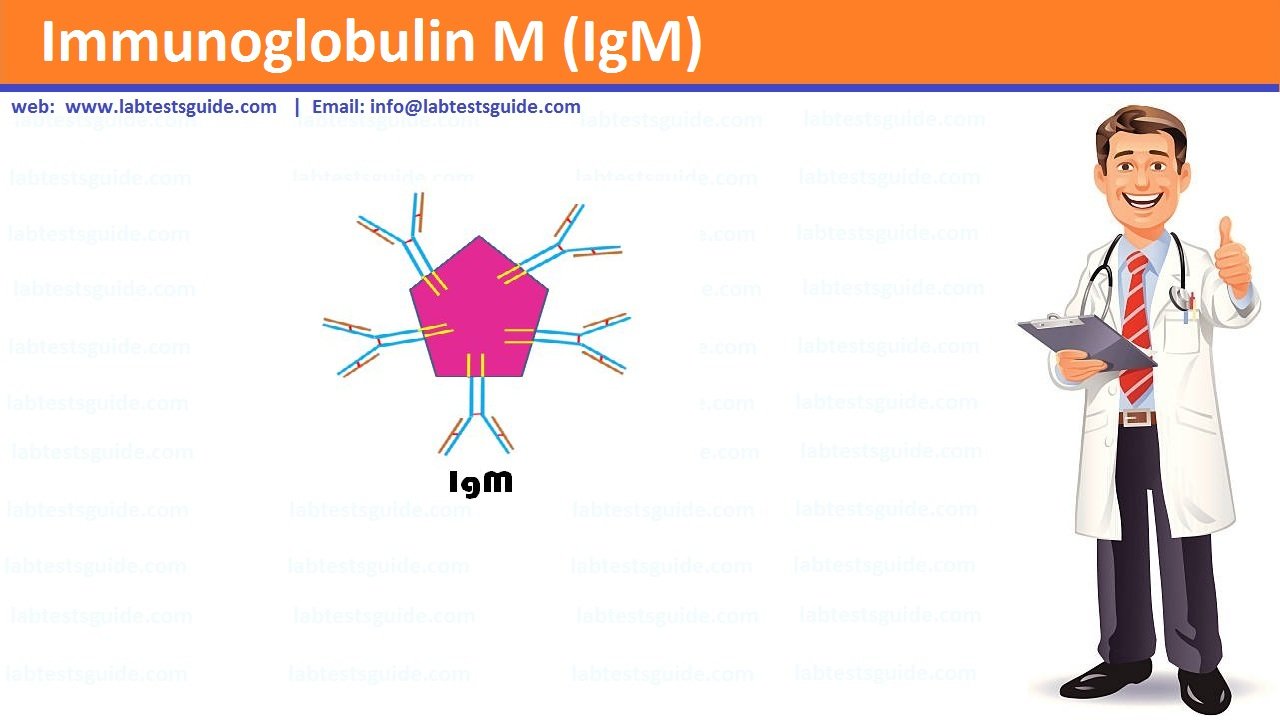One of the five classes of immunoglobulins; a large molecule, it is found in blood and is involved in combating blood infections. It is the first or primary immunoglobulin produced following exposure to an antigen.

Immunoglobulin M (IgM), which is found mainly in the blood and lymph fluid, is the first antibody to be made by the body to fight a new infection.
Sample
- Fresh serum of the patient is needed.
- Analyze the sample as soon as possible or can store at 4 °C for a few hours (less than 72 hours).
- The sample is stable at -20 °C for 6 months.
Indications
- Used to detect monoclonal gammopathy.
- It is advised in immune deficiencies.
Normal Value:
- Adult = 55 to 375 mg/dL
- Children = 20 to 200 mg/dL
Decreased level of IgM seen in:
- Decreased level seen in congenital deficiency diseases.
Increased level of IgM seen in :
- Elevations of IgM may be due to polyclonal immunoglobulin production which was seen in various infections.
- An isolated increase in IgM level may be seen in viral infections e.g. Viral hepatitis, infectious mononucleosis, and early response to bacterial or parasitic infection.
- Increased level of IgM may be seen in Rheumatoid arthritis, biliary cirrhosis, and some other chronic disorders.
- Raised levels are also seen in Hyper IgM dysgammaglobulinemia, active sarcoidosis, collagen vascular diseases, nephrotic syndrome.
- Monoclonal raised levels are seen in :
- Waldenstrom’s globulinemia.
- Lymphomas.
Possible References Used




